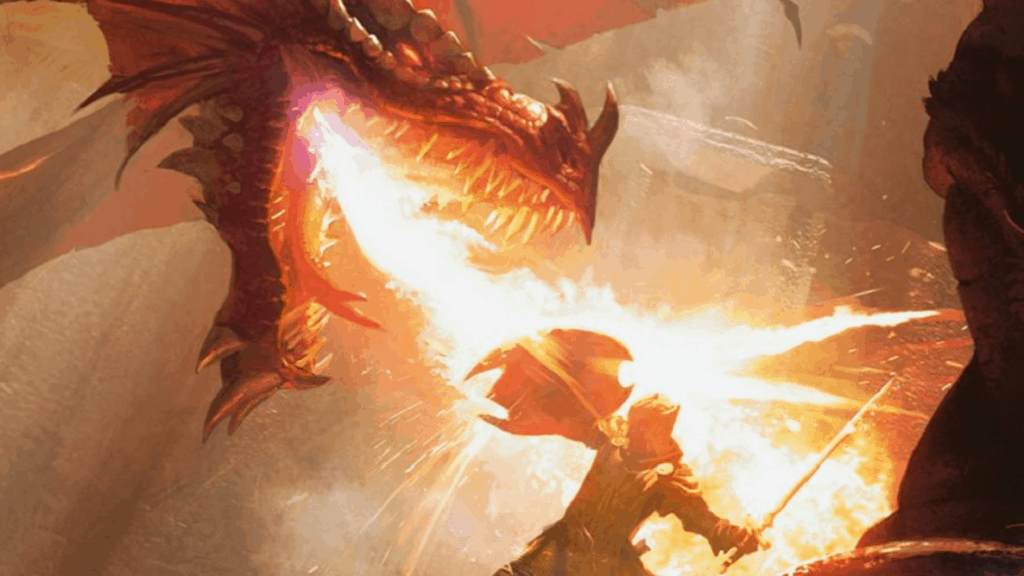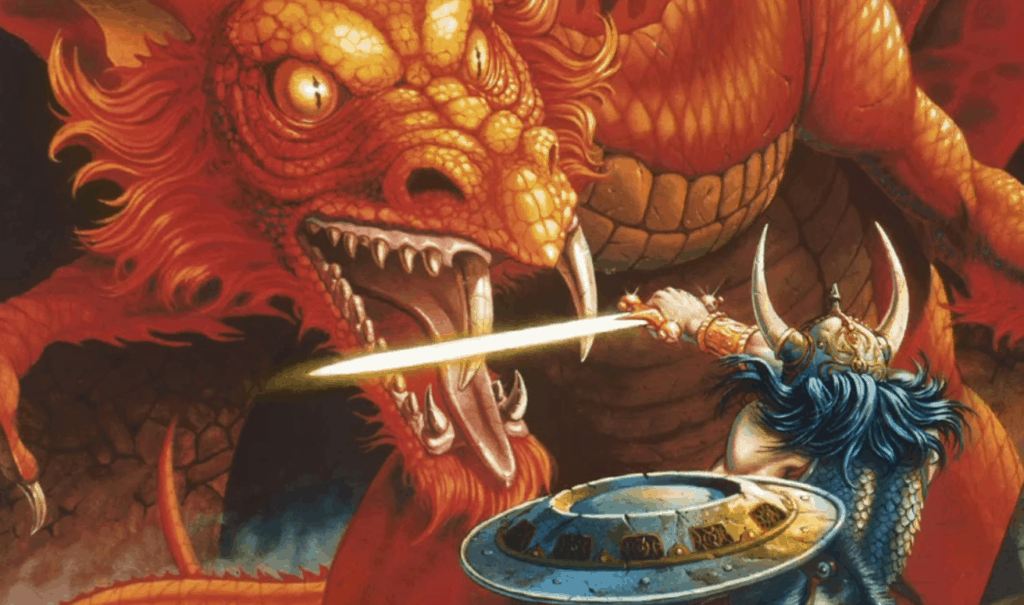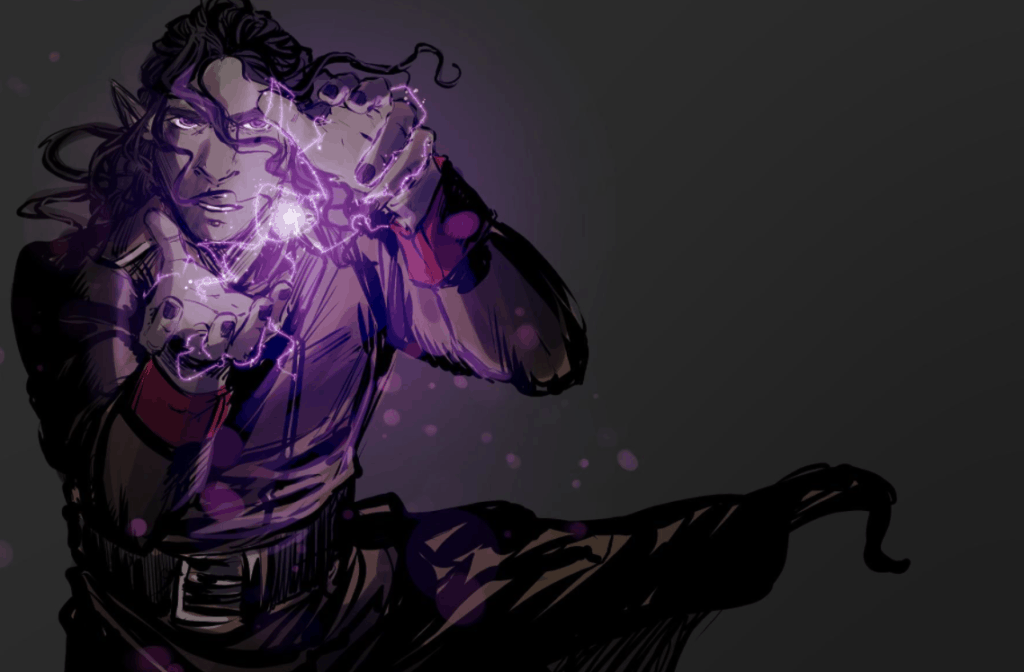Whenever you hear about this spell, or even see its name, you might start thinking about the whole ‘Bring Out Your Dead’ scene from Monty Python. This spell is almost the same, and it is actually a very interesting spell to use on wounded targets. It is more of a spell done for flavor rather than a powerful damage spell, but if your character likes to walk on the darker side of the D&D world, then it can be a good one.
Still, why would you want to use Toll the Dead as opposed to another type of cantrip? Why is Toll the Dead a valuable spell in your arsenal, and how should you effectively use it? Here is our Toll the Dead 5e guide.
What Is Toll the Dead
This spell is from Xanathar’s Guide to Everything, and here are its stats:
- Level: Cantrip
- Casting time: 1 Action
- Spell List: Warlock, Wizard. Cleric
- Range: 60 feet
- Components: V, S
- Duration: Instantaneous
You point at one creature you can see within range, and the sound of a dolorous bell fills the air around it for a moment. The target must succeed on a Wisdom saving throw or take 1d8 necrotic damage. If the target is missing any of its hit points, it instead takes 1d12 necrotic damage.
The spell’s damage increases by one die when you reach the 5th level (2d8 or 2d12), the 11th level (3d8 or 3d12), and the 17th level (4d8 or 4d12).
Breaking the spell down, we see that Toll the Dead is a cantrip for Warlocks, Wizards, and Clerics and takes one action to be cast. It has a range of 60 feet and has a verbal and somatic component. It’s also instantaneous when it is cast, without any prep time. Whenever you cast the spell, you point at one creature within 60 feet of you, and the sound of a bell fills the air. If the target passes a wisdom saving throw, nothing happens.
However, if they fail the saving throw, then they take 1d8 necrotic damage. If the creature has lost any of its hit points, then they take 1d12 damage instead. Now, the spell cannot be upcasted, but it does get a damage increase by one die whenever to reach 5th, 11th, and 17th level.
It isn’t the most damaging spell in a spellcaster’s arsenal, but it is a cantrip, so you don’t have to keep track of spell slots or worry about burning a slot if you miss the spell. It also does necrotic damage, which is often resisted. However, the damage increases if the target has already been wounded.
This spell might not be the opening salvo whenever it comes to combat, but it is a spell you can use whenever you are facing some weaker enemies that need to be put down. Your barbarian or rogue can cleave your enemies, and if any are still standing, you can simply cast this spell and put them down.
Using It For Roleplaying

Admittedly, if you are comparing the cantrip Toll the Dead to others such as Sacred Flame or Firebolt, Toll the Dead doesn’t do much. The damage isn’t the best when compared to the other cantrips, the range isn’t the best, and the ‘all or nothing’ nature of the cantrip can be a bit annoying whenever you miss with the spell.
Still, D&D isn’t just a game of numbers and damage spells. Instead, it can also be a game where you are roleplaying and picking your spells for your character as well. If you are playing a darker type of character who wants to deal necrotic damage rather than radiant damage, this is the perfect spell for you. It can even be the spell that can build your entire character!
Making The Spell Interesting
Alright, we’ve got necrotic damage, which is basically the absence of life. You are taking away life from the target, and this can mean a number of things. For example, you could focus on infecting your foes with disease or other horrors, blackening their flesh, or covering it with rashes and boils. You could weaken them, draining color and energy from your foes and drawing it into yourself.
You could even use the sound of the bells to drive your enemy mad, causing the necrotic energy to ripple through them with every single ring of the bell. There are a ton of ways to make the spell interesting, especially if you are a slightly darker spellcaster who loves to see what the limits of the necrotic damage can be.
The DM can also have some humor and interest when it comes to the spell falling as well. If phantom bells are heard, a dragon might laugh the bells off, while a goblin might bury his head into the sand and hide from the sound. It might help make missing with the spelling fun because everyone is going to react to it differently, even if they can overcome it.
When To Use Toll The Dead
The best time to use Toll the Dead is whenever your enemies are wounded. 4 extra damage is a lot, whether you are casting the spell on a goblin or a dragon. Plus, the number of hit points isn’t specified, so as long as they have lost at least one hitpoint, you are good to go to use the extra d12 damage dice.
This can be a good ‘mopping up’ spell to take down enemies that your allies have already wounded, or it can be the spell that you keep on casting at a much bigger target. At higher levels, the extra damage dice can be helpful on larger targets as well, and it can be a spell that keeps up with you throughout the game.
What About The Bell?

Alright, here’s something most DM’s don’t think about: How loud is the spell? Toll the Dead comes with a “dolorous bell.” A dolorous bell is a very sorrowful sounding bell, and the DM can decide if the sound of the bell is only heard by the target or by everyone else. Still, the bell is loud and powerful, which does bring up a question. Does the target need to hear you?
Now, the spell block doesn’t state that the bell is what does the damage or the sound is creating the necrotic damage. Perhaps you could flavor it as the bell is what is weakening the target to take on the necrotic damage, but typically if the spell doesn’t say that the target needs to be able to hear you, that’s not a factor.
Now, can enemies hear the bell, or can only the target hear it? That’s honestly up to the DM because the spell doesn’t tell us anything about the bell itself. You DM can pick a solution to the problem, and as long as they are consistent with the ruling, then that’s that.
What Monsters Won’t This Spell Work On?
One of the things you might think of if you are starting to cast the spell is what it won’t work on. Necrotic damage and Undead is an interesting thing to think about because while radiant damage does a lot of damage to the undead, what about necrotic?
Well, most of the time, the undead are the ones casting the necrotic damage at you, so whenever you cast the same spell at the undead, it’s interesting to see what happens! Most Undead are not vulnerable to necrotic damage, and zombies are also immune to it. On the other hand, Skeletons simply take the damage and have whatever forces keeping them alive eaten away.
Most evil forces are resistant to the necrotic damage, and some are immune, so the Toll the Dead Spell might not be the best thing to cast if you are fighting the dead. Against most other creatures, though, especially those that are mortal, are all going to take the damage normally.
Should Necrotic Damage Heal The Undead?

Well, the older editions of D&D had necrotic damage-dealing extra damage to the living and healing the undead. Similar to how the radiant energy from spells such as Lay on Hands could heal the living and deal extra damage to the undead. This was largely removed in 5e, but some intrepid DMs could always bring it back.
Moving things from one edition of D&D to the next can be very interesting, and while they might require some talking to your players and a bit of balancing to bring everything to 5e, going from edition to edition doesn’t need to be impossible.
It can add an extra layer to combat with the Undead and a large creature like a Lich or Necromancer because they can cast spells that deal necrotic damage on their minions and heal them up during combat. If your party is okay with the enemy doing some healing of their own, then it can make the big final battle even more fun.
Toll the Dead FAQ
Question: How Should I Differentiate Between The Two Damage Dice?
Answer: Of course, one of the things you and your DM can do is to have a difference between the D8 and the D12 of the damage dice. The necrotic damage can be very different whenever your target is not wounded and then whenever they are hovering on death’s door. Maybe the necrotic damage is intensifying their wounds and causing them even more pain.
Meanwhile, if your target is not wounded, then the necrotic damage might blister their skin or drain the life from them. Again, this might be cosmetic, but it can help make the usage of the spell much more fun. If your party is deep into description and roleplaying, this can be a very helpful way to make each spell interesting.
Question: What Other Spells Can Be Used With Toll the Dead?
Answer: If you want to roleplay a slightly darker character who focuses on necromancy, necrotic damage, or someone who just walks a bit on the wild side, then here are a few other spells your character might be able to use. Clerics can cast the spell ‘Inflict Wounds, ’ especially if they get close to their enemies.
They can make a melee combat spell against any enemy that they can reach and touch, and if the spell hits, then the target in question takes 3d10 necrotic damage, with the potential for the spell to be upcasted for extra d10 damage dice.
Blight can be another spell that can be used by warlocks and wizards, and the spell will drain vitality from the creature in question, causing them to take 8d8 necrotic damage on a failed Constitution save or half damage on a passed save. It can be a very interesting type of spell, especially when used on plants.
There are a lot of spells that clerics, warlocks, and wizards can use if they want to delve into the darker magic of the world of Faerun. Take a look at the spells available to you and also take a look at how your character is growing as they level up and go through their stories.
Question: Does Necrotic Damage Mean Evil?
Answer: Some PCs don’t like playing evil characters, but they might also want to get involved in these necrotic spells. Now, dark doesn’t always mean evil, and there’s a reason that a cleric can have some of these spells in their arsenal. You can still play around with necrotic damage despite wanting to play a lawful good character because maybe your character is using the necrotic damage for their own good ends.
There’s a lot of cool and interesting backstories that can happen whenever you mix a good character with some slightly darker spells. Do they love the dark magic and enjoy casting necrotic spells, or are they ashamed of their darkness? Heck, or you could just have a warlock who loves casting these spells because they are worshipping their god and also enjoy causing some pain.
- DnD Demons Guide: What Are Demons in 5e? - September 18, 2021
- Detect Thoughts 5e Guide: When, Why and How to Use It - September 9, 2021
- The Ultimate DnD Toll the Dead 5e Guide - September 9, 2021

